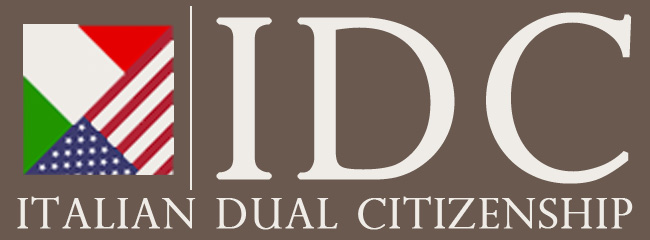ESL CONVERSATIONS FOR DUAL CITIZENS
ENGLISH AS A SECOND LANGUAGE GUIDE FOR NEW DUAL CITIZENS
Making friends, giving directions, and even shopping can get tricky for dual citizens used to speaking Italian when everyone around them only speaks English. But with practice, it gets easier to navigate social interactions with less frustration. Understanding conversation structure, important terms, and cultural expectations helps to make communication easier.
Making Friends
A student of English can meet a new friend anywhere, but their first conversation with a new friend will almost always follow the same pattern. First, each person will say who they are, and they may add an important, relevant detail. For instance, when meeting a neighbor, they may say that their name is Terry and they live at the end of the road.
After the introduction, participants in the discussion share some small talk. “Small talk” is just English slang for short, unimportant conversations that may help new friends learn a little about each other. They may discuss general personal information, like where they work or if they’re married or have children. They may also discuss something they have in common. This could be anything from the weather to the neighborhood block party. Even a person’s first language may become a topic for small talk. Many native English speakers are interested in other languages, and they may ask about an ESL student’s accent. Students should feel free to mention what their first language is. Finally, new friends end the conversation with a goodbye. They may say they look forward to meeting their conversation partner again.
Shopping
There are two parts to shopping language. First, there is shopping-based vocabulary. Second, there are communication techniques students will use in a shopping situation. Students should begin by comparing and identifying different types of stores. Different types of stores may provide similar products, but at different prices or with a different selection of items. A convenience store and a grocery store both sell milk, for example, but the convenience store usually charges shoppers more money. A specialty electronics store, like Best Buy, and a big-box store, like Walmart, may both offer headphones. However, Best Buy will have a bigger selection of headphones than Walmart.
Local stores often post their weekly ads online. These can help ESL students know what they want and how much they have to pay for it before they go to the store. Ads also help students see the difference between temporary “sale” prices and “regular” prices for the same item. Students should practice clarifying questions, like “How much is this?” before they shop and take an ad with them. Showing the store employees a picture of exactly what they are looking for can help them communicate effectively even if they get frustrated.
Asking for Directions
Prepositions are the key to directions. Prepositions express when and where: The library is past the post office, or the park closes after sunset. Directional words also help express directions. Students should practice using and understanding paired opposites like right and left, up and down, and ahead and behind. Directions rely on physical locations, so students can imagine where they are walking to find the best words. Mention local landmarks to help a conversation partner find their way.
Attending a Party
Parties can be overwhelming: There are so many people having different conversations at the same time that it’s hard to tell what to do or say. Each party is different, but there are a few things a host will always appreciate.
First, guests should always thank the host. Guests should thank them for the invitation and, if appropriate, praise the event. If the food is good, they enjoy the drinks, or they like the music, they should tell the host. And if they go to a dinner party, they should bring a small gift for the host. A bottle of wine is the most common expression of thanks, but flowers or a dessert also work.
Ordering Lunch
Different types of restaurants require different vocabularies and interaction styles. A fast-food restaurant usually posts a menu above the counter. When customers step up to the counter, the employee will greet them and ask what they would like. Customers should already know what they want, such as a cheeseburger and fries. Stand back from the counter and look at the menu until you decide what to order.
Other restaurants have servers who lead customers to a table and provide printed menus to look at after the customers are seated. They will ask for a customer’s order in several stages. First, they will ask about their drink choice and whether they want any appetizers. Then, they will ask what the customer want as an entrée, or primary meal. They will later ask for a dessert choice, and when the meal is over, they will present the check. Usually, guests give their credit card or cash to the server with the check, and the waiter returns a receipt to the table for the guest to sign.
Going on a Date
There are specific rituals in most English-speaking countries during dates. Usually, a man holds the door for his date, and sometimes, a man will slide in his date’s chair. These older traditions aren’t always observed, especially during informal dates. If a student asks someone on a date, however, they should be ready to pay for their food or ticket and the food/ticket of the person they invited on the date. The invited person may offer to pay their portion, but the student should be prepared to cover the full bill.
- ESL Conversation Activities
- How to Start and Maintain a Conversation in English
- Conversation: Meeting New People
- How to Give and Understand Directions in English
- ESL Self-Study Guide: Introducing Yourself
- How to Start a Conversation in English
- Four Tips for Learning a Foreign Language So You Can Make Friends
- 13 Struggles Only Girls Who Speak English as a Second Language Understand
- The Benefits of Working in Your Second Language
- Asking Directions
- Meeting People for the First Time (video)
- Everyday English for ESL: Fast Food Order (video)
- Tips for How to Ask for Directions in English
- English Vocabulary for Eating Out
- Ordering Food in English at a Restaurant
- English Vocabulary for Parties and Special Occasions
- Inviting Someone to a Party
- English Lesson: Come Over to My Place
- Small Talk in English
- Small Talk Example Dialogues
This page was last updated by Marco Permunian
Additional Resources:
- Italian citizenship by marriage South Africa
- Requirements for Italian citizenship
- Italian citizenship jure sanguinis requirements
- Italian citizenship UK
- Italian citizenship Canada
- Italian citizenship benefits
- How to get Italian citizenship through grandparents
- Italian citizenship Australia
- How to become an Italian dual citizen
- Apply for Italian citizenship
- 1948 rule
- Applying for an Italian passport
- Italian citizenship marriage
- Italian citizenship Brazil, Argentina, and South America


